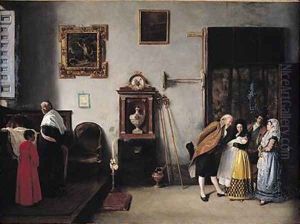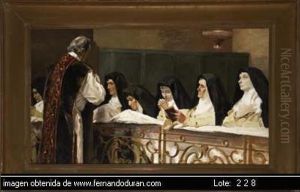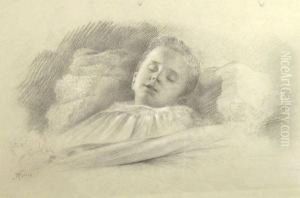Enrique Melida Paintings
Enrique Melida y Alinari, born in 1838 in Madrid, Spain, was a significant figure in the 19th-century Spanish art scene, particularly known for his work in historical painting, portraiture, and decorative arts. Melida's artistic journey was deeply influenced by the rich cultural milieu of Madrid during his lifetime, a period marked by a burgeoning interest in Romanticism and later, a transition towards Realism in the arts. His early education and exposure to the arts came through his initial training at the Real Academia de Bellas Artes de San Fernando, an institution pivotal in shaping the careers of many Spanish artists of the era.
Throughout his career, Melida engaged deeply with themes of historical significance and national identity, which were prevalent in the Romantic movement of the time. His works often depicted scenes from Spanish history with a vividness and intensity that brought the past to life, earning him accolades and recognition. Beyond historical painting, Melida also excelled in portraiture, capturing the likenesses of notable figures of his time with both precision and sensitivity. His portraits are celebrated for their detailed realism and psychological depth, reflecting the Realist movement's influence on his later work.
In addition to his contributions to painting, Enrique Melida was also involved in the decorative arts, particularly in the design of stained glass windows for various buildings and churches. This aspect of his work demonstrates his versatility and his ability to apply his artistic vision across different mediums. Melida's stained glass designs are noted for their vibrant colors and intricate compositions, blending artistic beauty with architectural functionality.
Enrique Melida's legacy is that of a multifaceted artist who was able to navigate the shifting trends of 19th-century art with skill and adaptability. His works, which span historical painting, portraiture, and decorative arts, reflect a deep engagement with the cultural and historical context of Spain. Melida's contributions to Spanish art were widely recognized in his time, and he remains a respected figure in the history of Spanish art. Sadly, his life was cut relatively short when he passed away in 1892, but his art continues to be celebrated for its historical significance and its profound beauty.


